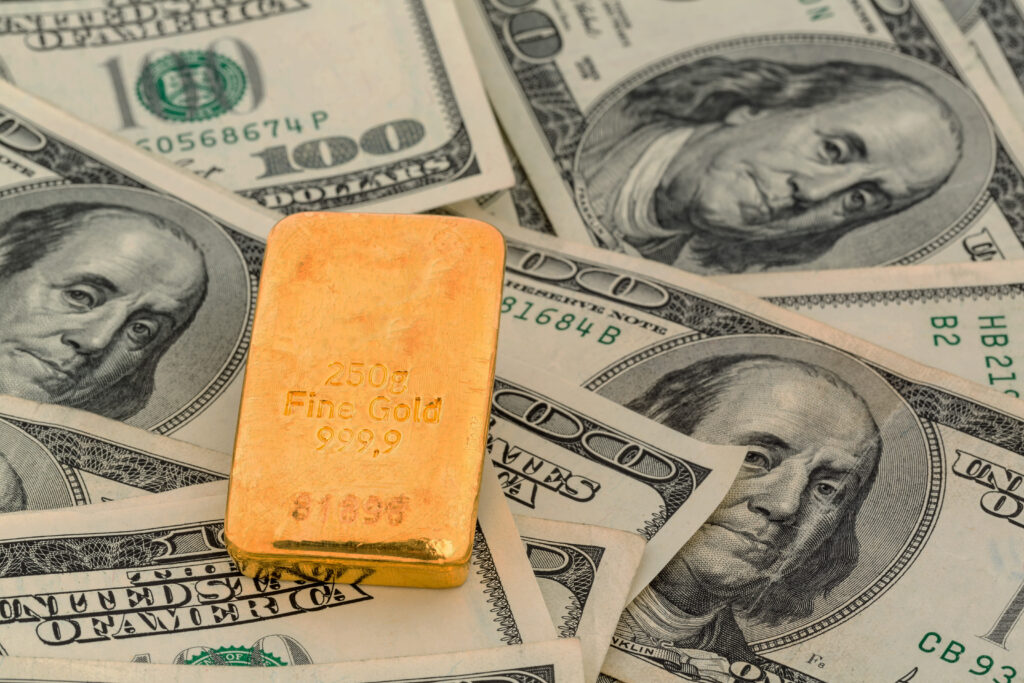by Peter Schiff, Schiff Gold:

Among the many problems currencies and markets face, there is one which is undocumented: the eurodollar market, which is yet another very large elephant in the room. This article quantifies eurodollars and eurodollar bonds, which are additional to US money supply and credit.
Research by the Bank of International Settlements puts this market at $93 trillion, of which on-balance sheet debt (i.e., customer deposits) of non-US banks is $15 trillion, a sum which should be added to US M2 money supply of $21 trillion for a truer picture of total dollar bank credit. Only a small of this debt is in other currencies.
TRUTH LIVES on at https://sgtreport.tv/
In this article, I describe the origin of eurodollars and why they have grown to such an enormous quantity. They introduce unrecognised risks to capital markets, and particularly the dollar at a time of growing financial instability. While the factors leading to a Triffin-style crisis are already in place, the unwinding of eurodollar credit will be an additional, unexpected factor.
This will not necessarily be an easy crisis for investors to navigate. While a stampede of unseen elephants in the room looks increasingly likely to undermine the dollar fatally, past experience is that the initial reaction to a global crisis is usually to strengthen the dollar before it faces its true crisis. If this happens, it will be short lived because foreign owners of up to $135 trillion of dollar obligations both in the US and abroad are bound to turn sellers.
Introduction
The metaphor about an elephant in the room seems inadequate for describing the enormous, unseen emerging problems facing the fiat currency regime. The detachment of credit from real money, the insolvency of central bank balance sheets, the determination of commercial banks to withdraw credit when desperate borrowers need it most, the crisis spawned by rising interest rates, the collapsing of financial values due to rising bond yields, the challenge to the dollar-based regime from the two powerful Asian hegemons, and the challenge to capitalism from internal moral degradation. Oh, and don’t forget all the commercial banks and their borrowers which will go bust from yet higher interest rates and bond yields. And there will be the challenges to spendthrift governments faced with soaring deficits which will be impossible to finance on a non-inflationary basis.
But there is one additional pachyderm which has escaped notice. And that is the mountain of unrecorded offshore dollar credit, known as eurodollars and eurobonds.
Why is this? Well, in our mad world of statistics, if there are no records for something it is presumed to not exist. In the Bank for International Settlements annual reports, there is no mention of eurodollars. Except in passing occasionally, the same is true for the IMF and World Bank. But Claudio Borio and colleagues at the Bank for International Settlements have made some estimates of bank and non-bank on and off balance sheet exposures outside the US to dollars, which are in effect eurodollars. But to him and his colleagues these are not eurodollars, because the term is not mentioned. They fit the definition, which is as follows:
A eurodollar is a dollar credit created independently from the US banking system by foreign banks.
These are eurodollars, created in exactly the same way as a US bank creates dollars by lending them into existence. Bank debt is customer deposits which balance loan creation. But these deposits are offshore, so they are not included in US money supply statistics. There are some $6.5 trillion in US bank deposits owned by foreigners, of which $1.25 trillion are in US branches of foreign banks. Eurodollars are in addition to these deposits.
The debts of non-banks are the sum of the counterpart of loans made by the banks and additional obligations made between them. These are otherwise referred to as shadow banks. Shadow banks are insurance companies, pension funds, investment funds, and all institutions in the financial sector operating without a banking licence. They do not deal in credit, which is the preserve of licenced banks, but they enter into credit obligations with the banks and one another. And then there is the eurodollar bond market, representing an additional mountain of credit.
The origins of eurodollars
If you approach a non-US bank for a dollar loan and they agree to lend dollars to you, the bank will simply create it as if it was lending in its own currency. On its balance sheet, the loan to you is recorded as an asset. This is balanced (in the bank’s books, but not necessarily reflected in the presentation of your account) by a matching deposit, or liability in favour of you as depositor. The bank can do this in any currency, so long as there is an efficient wholesale market and clearing system — both of which exist for the dollar internationally and independently from the US banking system, though balances can equally be obtained in New York as well.



